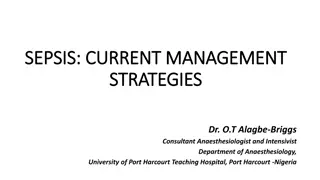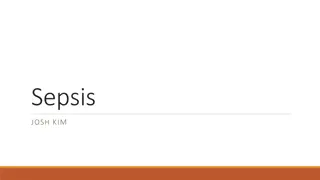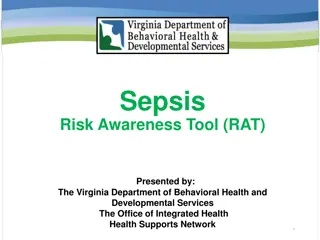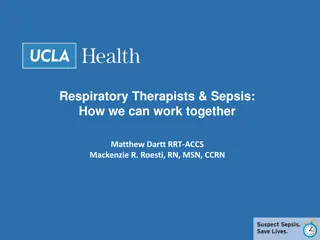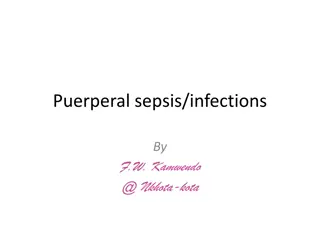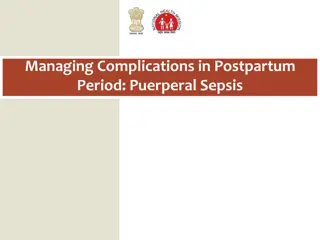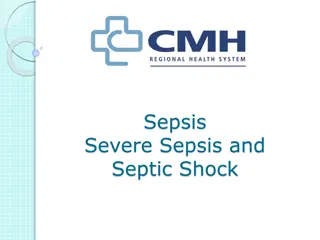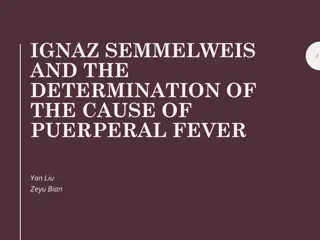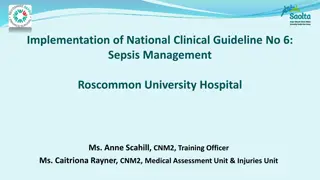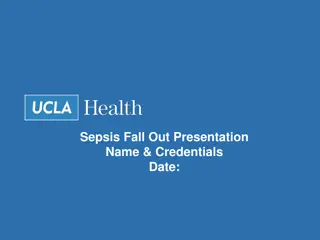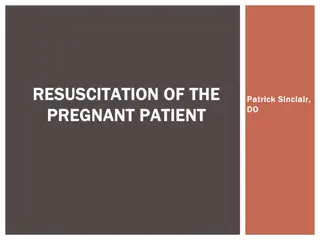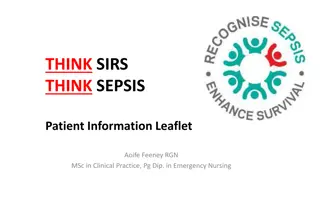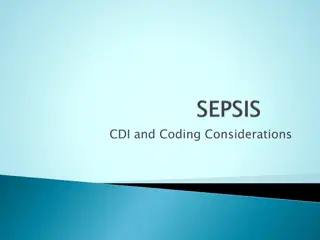
Puerperal Sepsis and DIC Pathology
Explore the causes, predisposing factors, clinical presentation, investigations, treatment, and management of puerperal sepsis alongside an overview of Disseminated Intravascular Coagulation (DIC). Learn about the localized and spreading forms of endometritis, common sites of infection, and general measures for treatment and prevention. Discover how to identify and address this serious postpartum condition effectively.
Download Presentation

Please find below an Image/Link to download the presentation.
The content on the website is provided AS IS for your information and personal use only. It may not be sold, licensed, or shared on other websites without obtaining consent from the author. If you encounter any issues during the download, it is possible that the publisher has removed the file from their server.
You are allowed to download the files provided on this website for personal or commercial use, subject to the condition that they are used lawfully. All files are the property of their respective owners.
The content on the website is provided AS IS for your information and personal use only. It may not be sold, licensed, or shared on other websites without obtaining consent from the author.
E N D
Presentation Transcript
DIC PUERPERRAL SEPSIS
Puerperal sepsis Bacterial infection of genital tract after delivery. Organism :polymicrobial Mode of infection: Exogenous: external sources Endogenous: organism already present in genital tract-anaerobic streptococci. Autogenous: from septic focus in the patient
Puerperal sepsis Predisposing factors General causes: anaemia, diabetes Local causes: ROM, laceration, retained placenta Site of infection: Primary: laceration, placental bed, retained tissue Secondary: tubes, ovaries, peritonium, parametrium, pelvic veins
pathology Localized= putrid endometritis= mild form Infection is limited to the superficial layer of endometrium Spreading=septic endometritis= severe form The endometrium is the commonest site of puerperal sepsis
Clinical picture Infected tears: local pain , mild fever, dysuria Endometritis: fever in the 3rdday, lower abdominal pain , tender uterus, offensive excessive lochia Septicaemia: 3rdor 4thday, high temp, pulse rapid, lochi is scanty and not offensive Salpingooophoritis: Parametritis: 2ndweek Peritonitis Pelvic thrombophlebitis: 2ndweek, mild fever,
Investigation CBC+ Diff WCC Blood culture MSU , culture sensitivity Cervicovaginal swab Ultrasound ? X ray chest, widal test, blood film for malaria
ttt Prophylactic: During pregnancy: ttt anaemia During labour: aseptic condition, VE <, antibiotic if SROM > 18H, complete delivery of placenta, Puerperium:avoid hospital acquired infection,
ttt General measures Antibiotic Drainage : fowler, semisitting, Heparin for pelvic vein thrombosis
DIC Normal fibrinogen 400-600mg% Bleeding from DIC fibrinogen <=100mg%
Causes of DIC Abruptio placenta 60-70% Missed miscarriage IUFD Sepsis AF embolism Severe preeclampsia and eclampsia Massive bleeding Massive blood transfusion Incompatable blood transfusion Acute fatty liver of pregnancy
Diagnosis of DIC Bleeding per nose , haematuria Bleeding from puncture sites PPH Clot observation test= Weiner test =bed sit test Failure of any clots in 5ml tube blood within 10 minutes indicate fibrinogen ?100mg% If a clot forms the tube incubated at 37c . If clot dissolves after 30 minutes it means excessive fibrinolytic activity
Diagnosis of DIC Low fibrinogen FDP > 40 micrograms/ml Platelet < 100,000/cumm Prothrombin time is increased ( N 10-15 second) Thrombin time is increased ( N 25-35 second) PTT is increased ( N 25-35 Second) Antithrombin 111 deficiency D-Dimers is increased > 0-5 microgram/ml is abnormal
Treatment of DIC Treat the cause: infection-antibiotic Fresh blood Fresh FP Cryoprecipitate Give platelet if Platelets <50,000 Antithrombin 111 adminstration Heparin to increase fibrinogen
Treatment of DIC Remember Dextran more than one liter may cause DIC Dextran interferes with cross matching One unit platelets raises the platelet count by 10,000/mm3 Each unit cryoprecipitate raise the fibrinogen level by 10mg/dl One liter of FFP Supplies 3 gm fibrinogen and all clotting factors

